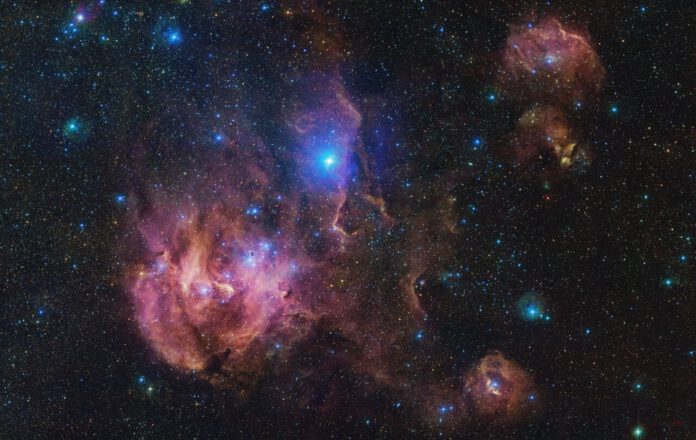
Understanding the ‘Running Chicken Nebula’
Have you ever wondered why the ‘Running Chicken Nebula’ came to be known as such? Well, you are about to learn the answer. Excitingly, this festive season, the European Southern Observatory (ESO) has shared an extraordinary galactic spectacle resembling a ‘Christmas chicken’. This newly unveiled image of an appealing gas nebula, known as the ‘Running Chicken Nebula’ is genuinely magnificent, irrespective of whether you agree with its nickname.
The Picture
The recently released picture of the Running Chicken Nebula, formally known as IC 2944, can be seen below. This highly detailed image consists of almost 1.5 million pixels and was captured using the VLT Survey Telescope (VST). The VST is located at the ESO site in Paranal, in the north of Chile.
This beautiful nebula is an open cluster of stars, accompanied by an emission nebula. It is a vast stellar nursery located in the constellation of Centaurus, approximately 6,500 light-years away. The young stars within the nebula emit powerful radiation that causes the surrounding hydrogen gas to glow in striking shades of pink. The Running Chicken Nebula comprises several sections, all visible in this expansive image. This photograph covers a sky area roughly equivalent to 25 full moons.
The Informal Nickname ‘Running Chicken Nebula’
The playful nickname ‘Running Chicken Nebula’ came about because with a bit of imagination, some people see the silhouette of a chicken in the nebula’s center. In the brightest part of the nebula, some see the chicken’s head and others its tail.
IC 2948 and IC 2944
This bright part is also known as IC 2948. It consists of delicate pastel-colored lines forming thin wisps of gas and dust. The central part of the image, marked by the bright, almost pillar-like structure, is IC 2944. The most prominent point in this specific area is Lambda Centauri, a star visible to the naked eye and significantly closer than the nebula itself.
Young Stars
Both IC 2948 and IC 2944 host numerous young stars in their territories. The intense radiation emitted by these young stars creates an environment resembling the outline of a chicken. However, certain areas of the nebula, known as Bok globules (named after the Dutch astronomer Bart Jan Bok), remain resilient against this intense bombardment of ultraviolet radiation. By zooming into the picture, you can identify these dark, compact concentrations of dust and gas standing out vividly against the bright gas nebula.
In the top right corner, two other sections of the Running Chicken Nebula, namely Gum 39 and 40, are visible. In the lower right is Gum 41. Besides the nebulas, numerous orange, white, and blue stars create a stunningly beautiful cosmic display. Moreover, the photo captures many more fascinating details: simply zoom in for a closer look!











